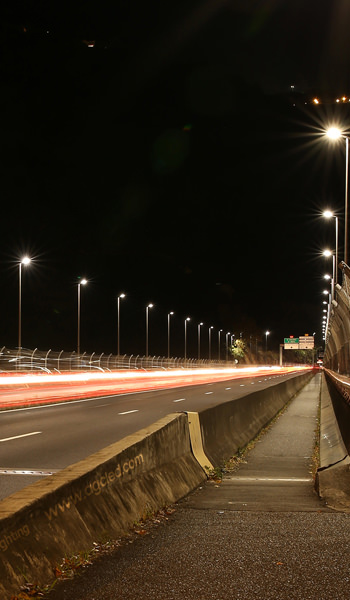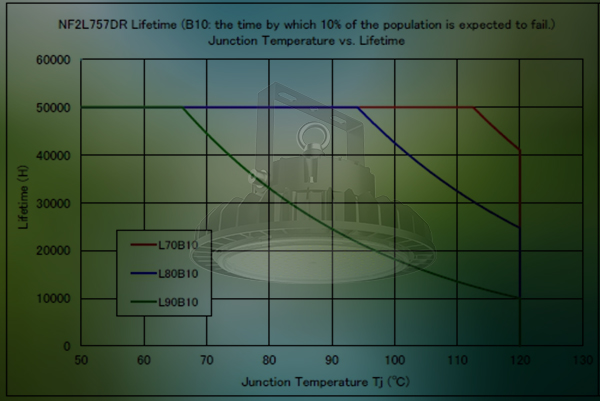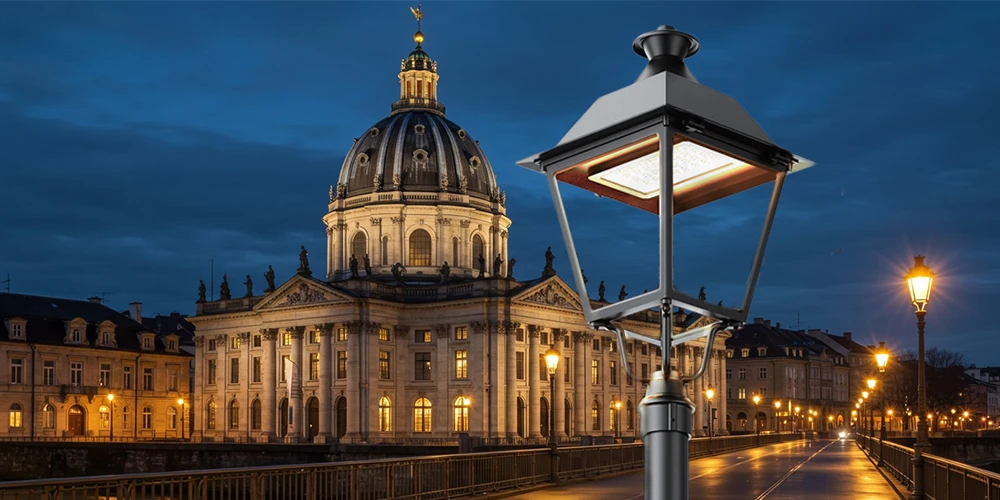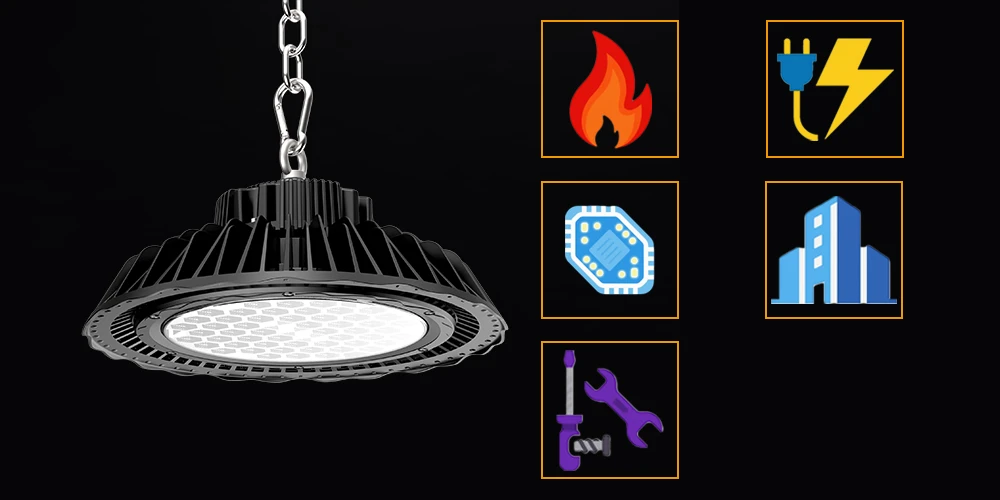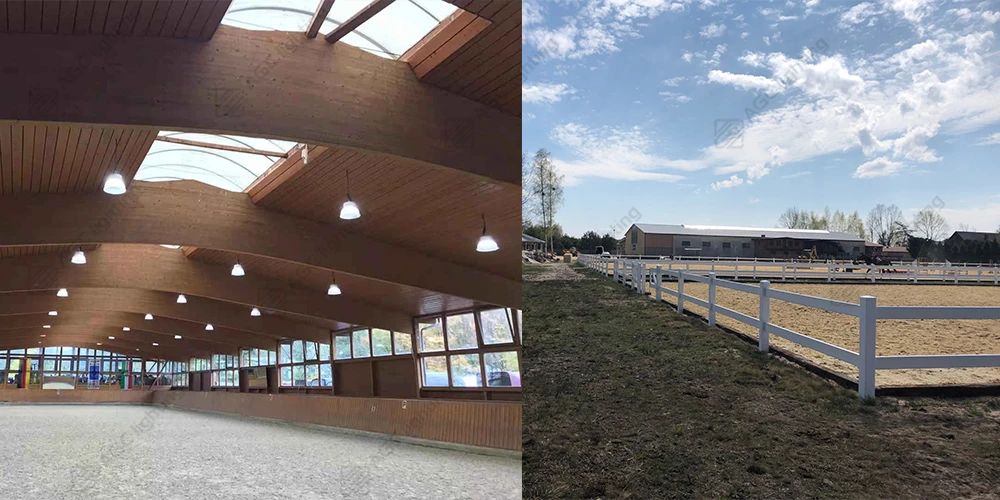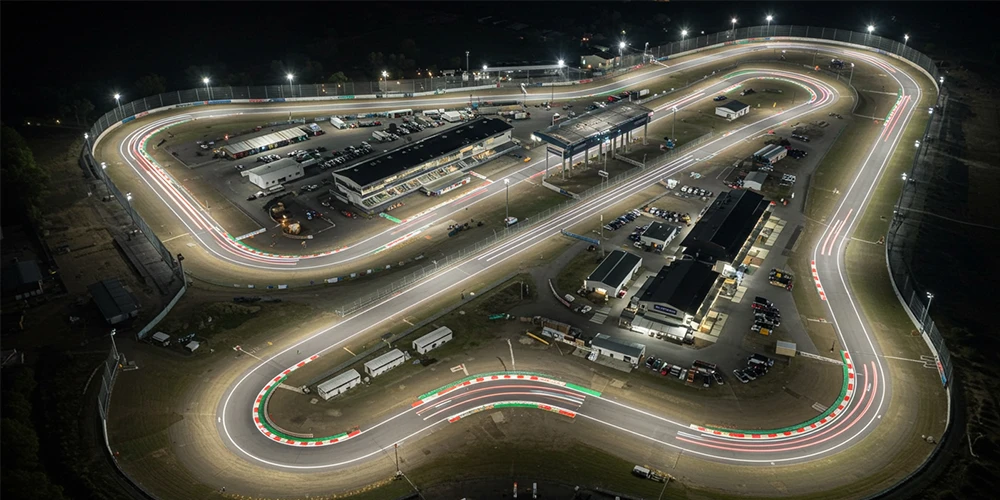Everyone in the LED lighting industry knows the lifetime of LED lights, but do you know how to indicate the end of life and the related lifetime? L and B can help you to know clearly.
L defines the percentage of lumens compared with the initial lumens. B value means the failure data at the L data. So the L/B value indicates the real lifetime at a certain hours.
For example, L80B10 at 50,000 hours means that at 50,000 hours, the LED lamp keeps 80% lumen from initial lumen and only 10% light fails to reach 80% lumen. L70B50 means only 50% lamp survives at 70% lumen remaining at 50,000 hours. So the light with L80B10 is much better than that with L70B10. But how to judge the LB value of a light? Let’s take the AGC high bay for example.
From our TM-21 test report, we can also see that the lumen maintenance of the LED source is 91.59% at 50000 hours at 25℃.

So we can say our LED high bay light is L90 at 50000 hours at 25℃. But when the working temperature is up to 30℃, 40℃, or 50℃, the fixture is still L90? Of course not, because the L/B value is related to the Tj of the LED, which is affected by the working temperature of the light.
Let’s see the report below provided by Nichia LED. We can see that when the Tc of the LED is below 65deg, it can be regarded as L90, when the Tc of the LED is below 90deg, it can be regarded as L80B10; when the Tc of the LED is below about 115 °, it can be regarded as L70B10.
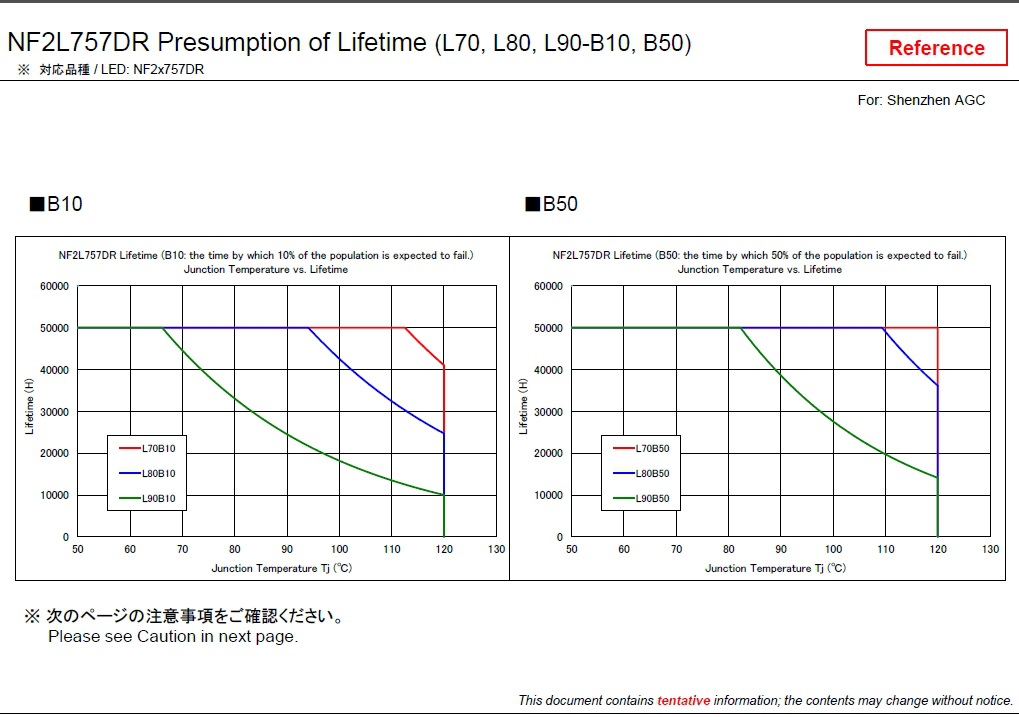

So, from it we can see that the L/B is a very important value to judge the real quality of the light fixture. L100B0 is the best quality, but it’s impossible to get that. So, from good quality to bad, that is L90, L80B10, L70B10, like this.
Want to know more about LED lights? Feel free to contact us, we can share more information with you!

